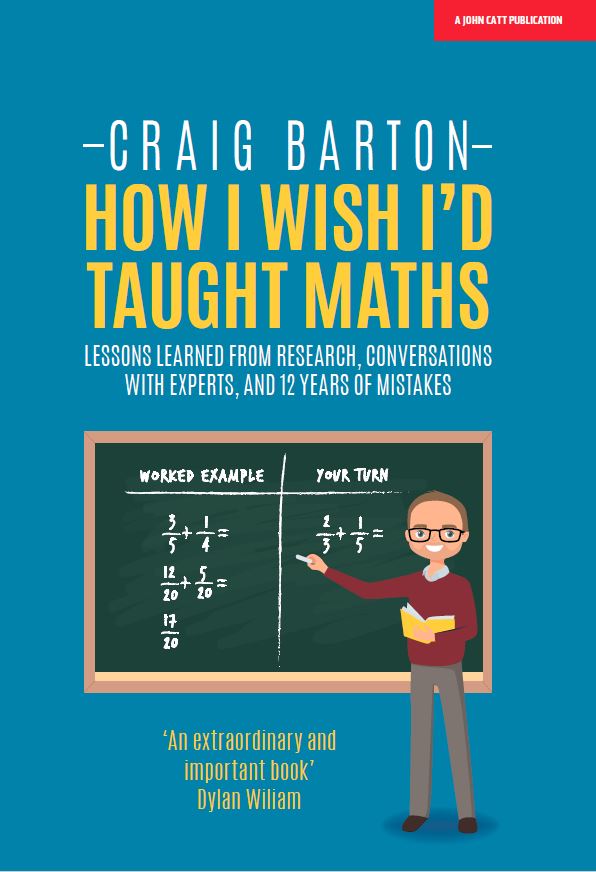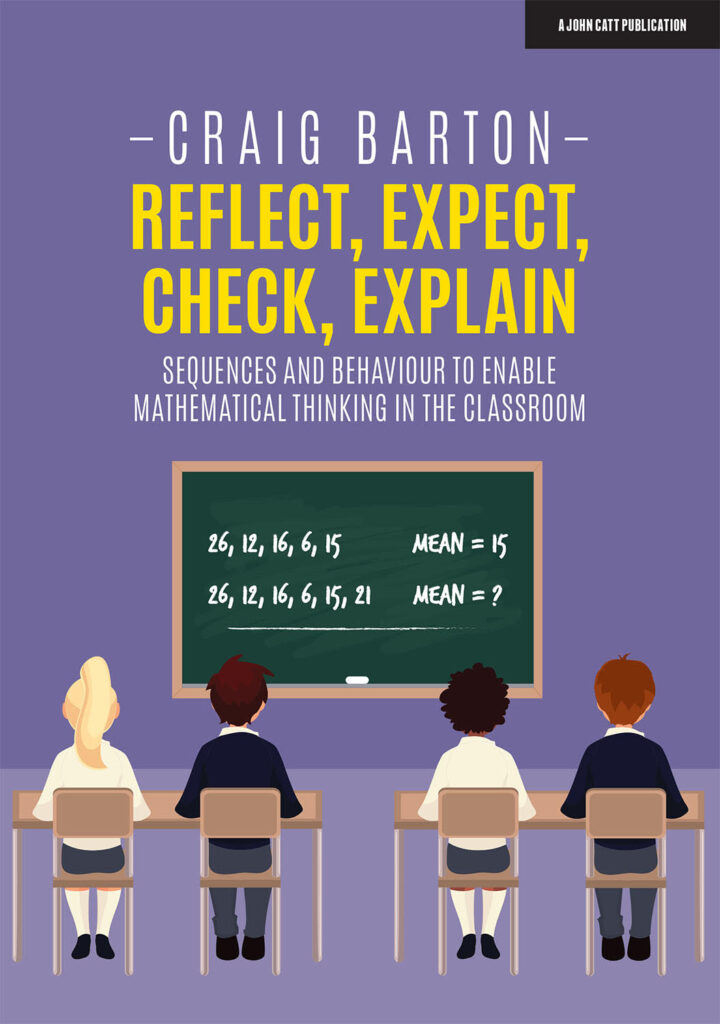GCSE Maths 2018 Higher Paper 1 Interactive Practice
⚠️ Non-Calculator Paper
All solutions show full working that can be done by hand.
Mark Scheme Legend
- M1 = Method mark (correct method applied)
- A1 = Accuracy mark (correct answer)
- B1 = Independent mark (correct statement or value)
- P1 = Process mark (completing a process)
- C1 = Communication mark (clear explanation)
Table of Contents
- Question 1 (Fractions)
- Question 2 (Ratio)
- Question 3 (Percentages)
- Question 4 (Estimation)
- Question 5 (3D Shapes)
- Question 6 (Coordinates)
- Question 7 (Transformations)
- Question 8 (Perimeter & Area)
- Question 9 (Indices)
- Question 10 (Box Plots)
- Question 11 (Circle Theorems)
- Question 12 (Proof)
- Question 13 (Surds)
- Question 14 (Proportion)
- Question 15 (Algebraic Proof)
- Question 16 (Probability)
- Question 17 (Algebraic Fractions)
- Question 18 (Trig Graphs)
- Question 19 (Lines & Gradients)
- Question 20 (Inequalities)
Question 1 (4 marks)
(a) Work out \( 2\frac{1}{7} + 1\frac{1}{4} \)
(b) Work out \( 1\frac{1}{5} \div \frac{3}{4} \)
Give your answer as a mixed number in its simplest form.
Worked Solution
Part (a)
💡 Why we do this: Convert mixed numbers to improper fractions to make adding easier.
✏ Working:
\[ 2\frac{1}{7} = \frac{15}{7}, \quad 1\frac{1}{4} = \frac{5}{4} \]Find common denominator (28):
\[ \frac{15 \times 4}{28} + \frac{5 \times 7}{28} = \frac{60}{28} + \frac{35}{28} = \frac{95}{28} \]Convert back to mixed number:
\[ 95 \div 28 = 3 \text{ rem } 11 \Rightarrow 3\frac{11}{28} \]✓ (M1, A1)
Part (b)
✏ Working:
\[ 1\frac{1}{5} = \frac{6}{5} \]Keep, Change, Flip:
\[ \frac{6}{5} \times \frac{4}{3} = \frac{24}{15} \]Simplify (divide by 3):
\[ \frac{8}{5} = 1\frac{3}{5} \]✓ (M1, A1)
(a) \( 3\frac{11}{28} \)
(b) \( 1\frac{3}{5} \)
Question 2 (3 marks)
In a village:
- the number of houses and the number of flats are in the ratio 7 : 4
- the number of flats and the number of bungalows are in the ratio 8 : 5
There are 50 bungalows in the village.
How many houses are there in the village?
Worked Solution
Step 1: Find number of flats
✏ Working:
Flats : Bungalows = 8 : 5
5 parts = 50 bungalows.
1 part = 10.
Flats = \( 8 \times 10 = 80 \).
✓ (P1)
Step 2: Find number of houses
✏ Working:
Houses : Flats = 7 : 4
4 parts = 80 flats (from Step 1).
1 part = \( 80 \div 4 = 20 \).
Houses = \( 7 \times 20 = 140 \).
✓ (P1, A1)
140 houses
Question 3 (4 marks)
Renee buys 5 kg of sweets to sell. She pays £10 for the sweets.
Renee puts all the sweets into bags. She puts 250 g of sweets into each bag.
She sells each bag of sweets for 65p.
Renee sells all the bags of sweets. Work out her percentage profit.
Worked Solution
Step 1: Number of bags
✏ Working:
5 kg = 5000 g.
Bags = \( 5000 \div 250 = 20 \).
✓ (P1)
Step 2: Total Revenue
✏ Working:
Revenue = \( 20 \times 65\text{p} = 1300\text{p} = £13 \).
✓ (P1)
Step 3: Percentage Profit
✏ Working:
Profit = £13 – £10 = £3.
% Profit = \( \frac{3}{10} \times 100 = 30\% \).
✓ (P1, A1)
30%
Question 4 (4 marks)
A cycle race across America is 3069.25 miles in length.
Juan knows his average speed for his previous races is 15.12 miles per hour.
For the next race across America he will cycle for 8 hours per day.
(a) Estimate how many days Juan will take to complete the race.
(b) Juan trains for the race. The average speed he can cycle at increases. It is now 16.27 miles per hour. How does this affect your answer to part (a)?
Worked Solution
Part (a)
💡 Why we do this: Round to 1 significant figure for estimation.
✏ Working:
Distance ≈ 3000 miles. Speed ≈ 15 mph.
Miles per day = \( 15 \times 8 = 120 \).
Days = \( \frac{3000}{120} = \frac{300}{12} = 25 \).
✓ (P1, P1, A1)
Part (b)
✏ Working:
Higher speed means more miles per day, so fewer days taken.
✓ (C1)
(a) 25 days
(b) It would take less time.
Question 5 (6 marks)
Here is a solid square-based pyramid, VABCD.
The base is a square of side 6 cm. Height is 4 cm. M is midpoint of BC, VM = 5 cm.
(a) Draw the front elevation from the direction of the arrow (facing AB).
(b) Work out the total surface area.
Worked Solution
Part (a)
💡 Why we do this: Front elevation is a triangle with base 6cm and height 4cm.
✏ Diagram:
✓ (M1, A1)
Part (b)
✏ Working:
Area of Base = \( 6 \times 6 = 36 \text{ cm}^2 \).
Area of one triangular face (using slant height 5):
\[ \frac{1}{2} \times 6 \times 5 = 15 \text{ cm}^2 \]Total Area = Base + 4 Triangles = \( 36 + (4 \times 15) \).
\[ 36 + 60 = 96 \text{ cm}^2 \]✓ (M1, M1, A1)
96 cm²
Question 6 (5 marks)
A pattern is made from four identical squares.
Point A is (6, 7). Point B is (38, 36). Work out the coordinates of C.
Worked Solution
Step 1: Find square size
✏ Working:
Horizontal diff: \( 38 – 6 = 32 \). This spans 4 squares.
Side length = \( 32 \div 4 = 8 \).
Step 2: Find C
💡 Why we do this: C is 2 squares right of A, and effectively 1 square up from A (since it’s top of 2nd square vs bottom of 1st… wait, A is bottom left of 1st. C is top right of 2nd).
✏ Working:
x-coord: Start 6, move right 2 widths: \( 6 + 16 = 22 \).
y-coord: Start 36 (B), move down 2 heights: \( 36 – 16 = 20 \).
✓ (P1, P1, A1)
(22, 20)
Question 7 (2 marks)
Shape T is reflected in x = -1 to give R. R is reflected in y = -1 to give S.
Describe the single transformation that maps T to S.
Worked Solution
Step 1: Analyze reflections
💡 Why we do this: Two perpendicular reflections result in a 180° rotation.
✏ Working:
Center is intersection of \(x=-1\) and \(y=-1\).
Transformation: Rotation 180° about (-1, -1).
✓ (B2)
Rotation 180° about (-1, -1)
Question 8 (4 marks)
Perimeter of right-angled triangle is 72 cm. Sides are in ratio 3:4:5. Work out area.
Worked Solution
Step 1: Side lengths
✏ Working:
Parts: \( 3+4+5=12 \).
1 part = \( 72 \div 12 = 6 \).
Sides: 18, 24, 30.
Step 2: Area
✏ Working:
Base and height are shorter sides (18, 24).
Area = \( 0.5 \times 18 \times 24 = 9 \times 24 = 216 \).
✓ (P1, P1, A1)
216 cm²
Question 9 (4 marks)
(a) \( 36^{1/2} \)
(b) \( 23^0 \)
(c) \( 27^{-2/3} \)
Worked Solution
(a) \( \sqrt{36} = 6 \)
(b) \( 1 \)
(c) \( (\sqrt[3]{27})^{-2} = 3^{-2} = \frac{1}{3^2} = \frac{1}{9} \)
✓ (B1, B1, M1, A1)
(a) 6, (b) 1, (c) 1/9
Question 10 (5 marks)
Data: Least=133, Greatest=170, LQ=145, UQ=157, Median=151.
(a) Draw box plot.
(b) Estimate number of girls between 133 and 157 cm (Total 80 girls).
Worked Solution
Part (a)
✏ Working:
Draw box from 145 to 157. Line at 151. Whiskers to 133 and 170.
Part (b)
✏ Working:
Range 133 to 157 covers Min to UQ.
This is 3 quartiles = 75%.
\( 0.75 \times 80 = 60 \).
✓ (M1, A1)
60 girls
Question 11 (5 marks)
A, B on circle centre O. BC tangent. AOC straight line. Angle ABO = \(x\).
Find angle ACB in terms of \(x\).
Worked Solution
✏ Working:
1. Triangle OAB is isosceles (radii). Angle OAB = \(x\).
2. Angle AOB = \(180 – 2x\).
3. Angle BOC = \(2x\) (Straight line).
4. Angle OBC = 90° (Tangent/Radius).
5. In triangle OBC: \( \text{ACB} = 180 – 90 – 2x = 90 – 2x \).
✓ (C2)
\( 90 – 2x \)
Question 12 (4 marks)
Prove that the square of an odd number is always 1 more than a multiple of 4.
Worked Solution
Step 1: Define odd number
Let number = \( 2n + 1 \).
✓ (B1)
Step 2: Square it
✓ (M1, A1)
Step 3: Conclusion
\( 4(n^2+n) \) is a multiple of 4, so the result is 1 more than a multiple of 4.
✓ (C1)
Question 13 (3 marks)
\( \sqrt{5}(\sqrt{8} + \sqrt{18}) \) can be written in the form \( a\sqrt{10} \).
Find the value of \( a \).
Worked Solution
✏ Working:
Simplify surds inside:
\[ \sqrt{8} = \sqrt{4 \times 2} = 2\sqrt{2} \] \[ \sqrt{18} = \sqrt{9 \times 2} = 3\sqrt{2} \] \[ \text{Sum} = 5\sqrt{2} \]Multiply by \(\sqrt{5}\):
\[ \sqrt{5} \times 5\sqrt{2} = 5\sqrt{10} \]So \( a = 5 \).
✓ (M1, M1, A1)
a = 5
Question 14 (5 marks)
\( y \) is inversely proportional to \( d^2 \). When \( d=10, y=4 \).
\( d \) is directly proportional to \( x^2 \). When \( x=2, d=24 \).
Find a formula for \( y \) in terms of \( x \). Simplest form.
Worked Solution
Step 1: First formula
✓ (P1, P1)
Step 2: Second formula
✓ (P1)
Step 3: Combine
Simplify fraction:
\[ y = \frac{100}{9x^4} \]✓ (P1, A1)
\( y = \frac{100}{9x^4} \)
Question 15 (4 marks)
(a) Factorise \( a^2 – b^2 \)
(b) Hence, or otherwise, simplify fully \( (x^2 + 4)^2 – (x^2 – 2)^2 \)
Worked Solution
Part (a)
✓ (B1)
Part (b)
Use difference of squares where \( a = x^2+4 \) and \( b = x^2-2 \).
Sum: \( (x^2+4) + (x^2-2) = 2x^2 + 2 \)
Diff: \( (x^2+4) – (x^2-2) = 6 \)
Multiply: \( 6(2x^2 + 2) = 12x^2 + 12 \)
✓ (M1, M1, A1)
\( 12x^2 + 12 \)
Question 16 (3 marks)
Bag contains Red, Blue, Purple. Ratio Red:Blue = 3:17.
Probability Purple = 0.2. Work out Probability Red.
Worked Solution
✏ Working:
Prob(Red or Blue) = \( 1 – 0.2 = 0.8 \).
Ratio R:B = 3:17 (Total 20 parts).
20 parts = 0.8 probability.
1 part = \( 0.8 \div 20 = 0.04 \).
Prob(Red) = \( 3 \times 0.04 = 0.12 \).
✓ (P1, P1, A1)
0.12
Question 17 (3 marks)
Simplify fully \( \frac{3x^2 – 8x – 3}{2x^2 – 6x} \)
Worked Solution
✏ Working:
Factorise numerator: \( 3x^2 – 8x – 3 = (3x+1)(x-3) \).
Factorise denominator: \( 2x^2 – 6x = 2x(x-3) \).
Cancel \( (x-3) \):
\[ \frac{3x+1}{2x} \]✓ (M1, M1, A1)
\( \frac{3x+1}{2x} \)
Question 18 (2 marks)
Graph of \( y = \sin x \) is shown. Sketch \( y = \sin x – 2 \).
Worked Solution
Shift the graph down by 2 units.
✓ (C2)
Question 19 (5 marks)
P is (3, 4). Q is (a, b). Line perpendicular to PQ is \( 3x + 2y = 7 \).
Find expression for b in terms of a.
Worked Solution
Step 1: Gradient of perpendicular line
Gradient \( m_1 = -1.5 \)
✓ (P1)
Step 2: Gradient of PQ
Perpendicular gradient \( m_2 = \frac{-1}{-1.5} = \frac{2}{3} \).
✓ (P1)
Step 3: Equation
✓ (P1, P1, A1)
\( b = \frac{2}{3}a + 2 \)
Question 20 (5 marks)
\( n \) is an integer.
\( 3n + 2 \le 14 \) and \( \frac{6n}{n^2 + 5} > 1 \).
Find all possible values of \( n \).
Worked Solution
Step 1: First inequality
✓ (M1)
Step 2: Second inequality
Roots at 1 and 5. Curve is < 0 between roots.
\[ 1 < n < 5 \]✓ (M1, M1)
Step 3: Combine
Integers satisfying \( n \le 4 \) AND \( 1 < n < 5 \):
2, 3, 4.
✓ (A1)
2, 3, 4








